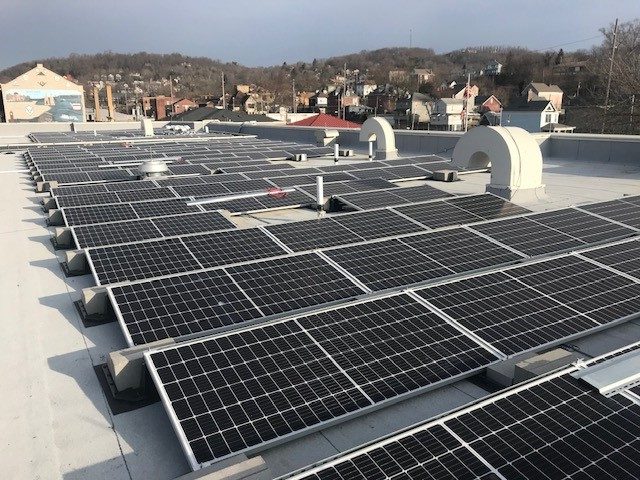By
As part of a university-wide initiative, the ¬È∂πæ´—° campuses in Salem and East Liverpool are going green through a renewable energy project to provide solar panels at each location, resulting in cost savings and reducing the carbon footprint of Kent State.
A year ago, the ¬È∂πæ´—° Board of Trustees approved the solar panel project for six of its regional campuses as part of the university‚Äôs Energy Master Plan. The university publicly solicited proposals and Ten Nine Energy LLC was selected to lead the project. The project could produce up to 56 percent of the electricity required by the regional campuses annually while saving nearly $130,000 during the first year and more than $1.5 million for the duration of the 25-year contract.
Locally, work is wrapping up on the Salem Campus to install ground-mounted solar photovoltaic panels on a fenced-in plot of ground behind the main classroom building. In East Liverpool, rooftop panels on Purinton Hall are being installed on the rooftop.
There is no upfront capital expense to Kent State, but all electricity produced will be purchased at a negotiated rate with the developer.
The overall project will also benefit the utility electric grid. During the summer, with high electricity use because of air conditioning, the solar array will produce the most electricity and reduce the stress on the local electric grids.
Aside from the Salem and East Liverpool campuses, solar panels are being installed on the Ashtabula, Geauga, Stark and Trumbull campuses.
“I applaud Kent State’s vision and the commitment to our environment demonstrated by this project,” noted Dr. David Dees, dean and chief administrative officer of the Columbiana County campuses. “Solar energy is a clean, renewable energy source and this is a way for us to be good stewards of the local environment.”
Because of limited open land on the East Liverpool Campus, a rooftop solar array of 232 solar panels is being installed on Purinton Hall and electricity will be extended to the building. The panels are mounted on a weight ballasted system that does not require roof penetrations and will not compromise the new roofing system recently installed on the building.
The minimum 25-year solar electric cost savings to the East Liverpool Campus is expected to be about $40,000 with a reduced carbon footprint of 89 tons of carbon dioxide. This is the equivalent to removing 18 cars from roadways.

